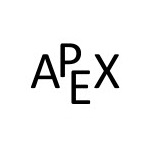1.5.1: Ejercicios 1.5
- Page ID
- 113957
Términos y Conceptos
Ejercicio\(\PageIndex{1}\)
Explicar la relación entre funciones logarítmicas y funciones exponenciales.
- Responder
-
Para la misma base, son inversos el uno del otro.
Ejercicio\(\PageIndex{2}\)
¿Qué preguntas respondes cuando evalúas\(\log_5{(25)}\)?
- Responder
-
\(25\) is \(5\) raised to what power?
Ejercicio\(\PageIndex{3}\)
¿Cuál es el valor de la base para\(\ln{(x)}\)?
- Responder
-
\(e\)
Ejercicio\(\PageIndex{4}\)
Explica por qué los logaritmos ayudan a resolver declaraciones exponenciales.
- Responder
-
Los logaritmos ayudan a resolver declaraciones exponenciales porque logaritmos y exponenciales son funciones inversas.
Problemas
Evaluar la declaración dada en ejercicios\(\PageIndex{5}\) —\(\PageIndex{8}\).
Ejercicio\(\PageIndex{5}\)
\(\displaystyle \log_3{(81)}\)
- Responder
-
\(4\)
Ejercicio\(\PageIndex{6}\)
\(\displaystyle \ln{(e^{5.7})}\)
- Responder
-
\(5.7\)
Ejercicio\(\PageIndex{7}\)
\(\displaystyle e^{-\ln{(x})}\)
- Responder
-
\(\displaystyle \frac{1}{x}\)
Ejercicio\(\PageIndex{8}\)
\(\displaystyle 4^{\log_2{(2^2)}}\)
- Responder
-
\(\displaystyle 16\)
Escribir la declaración dada como un logaritmo sencillo simplificado en los ejercicios\(\PageIndex{9}\) —\(\PageIndex{12}\).
Ejercicio\(\PageIndex{9}\)
\(\displaystyle 4 \log_3{(2x)}-\log_3{(y^2)}\)
- Responder
-
\(\displaystyle \log_3{\Big( \frac{16x^4}{y^2}\Big)}\)
Ejercicio\(\PageIndex{10}\)
\(\displaystyle \frac{2}{3} \ln{(x)} + 3\ln{(2y)}\)
- Responder
-
\(\displaystyle \ln{(8x^{2/3}y^3)}\)
Ejercicio\(\PageIndex{11}\)
\(\displaystyle (2x)\log_2{(3)}+ \log_2{(5)}\)
- Responder
-
\(\displaystyle \log_2{(5 (3^{2x}))}\)
Ejercicio\(\PageIndex{12}\)
\(\displaystyle 3\ln{(xy)}-2\ln{(x^2y)}\)
- Responder
-
\(\displaystyle \ln{\Big( \frac{y}{x} \Big)}\)
En ejercicios\(\PageIndex{13}\) —\(\PageIndex{17}\), resolver el problema dado para\(x\), si es posible. Si un problema no se puede resolver, explique por qué.
Ejercicio\(\PageIndex{13}\)
\(\displaystyle 5^x = 25\)
- Responder
-
\(\displaystyle x=2\)
Ejercicio\(\PageIndex{14}\)
\(\displaystyle 5^x = -5\)
- Responder
-
No es posible; no podemos elevar un número positivo a una potencia y obtener un número negativo.
Ejercicio\(\PageIndex{15}\)
\(\displaystyle 5^x = 0\)
- Responder
-
No es posible; no podemos elevar un número positivo a una potencia y obtener un cero.
Ejercicio\(\PageIndex{16}\)
\(\displaystyle 5^x = 0.2\)
- Responder
-
\(x=-1\)
Ejercicio\(\PageIndex{17}\)
\(\displaystyle 5^x = 1\)
- Responder
-
\(x=0\)
En ejercicios\(\PageIndex{18}\) —\(\PageIndex{25}\), resolver el problema dado para\(x\).
Ejercicio\(\PageIndex{18}\)
\(\displaystyle 3^{x-6} =2\)
- Responder
-
\(x=6+\log_3{(2)}\)
Ejercicio\(\PageIndex{19}\)
\(\displaystyle 4^{2x-5} = 3\)
- Responder
-
\(\displaystyle x=\frac{5+\log_4{(3)}}{2}\)
Ejercicio\(\PageIndex{20}\)
\(\displaystyle 2^{5x+6} = 4\)
- Responder
-
\(\displaystyle x=\frac{-4}{5}\)
Ejercicio\(\PageIndex{21}\)
\(\displaystyle 6^{x+\pi} = 2\)
- Responder
-
\(\displaystyle x=\log_6{(2)} - \pi\)
Ejercicio\(\PageIndex{22}\)
\(\displaystyle \bigg( \frac{1}{6}\bigg)^{-3x-2}=36^{x+1}\)
- Responder
-
\(\displaystyle x=0\)
Ejercicio\(\PageIndex{23}\)
\(\displaystyle -15=-8\ln{(3x)}+7\)
- Responder
-
\(\displaystyle x=\frac{1}{3} e^{11/4}\)
Ejercicio\(\PageIndex{24}\)
\(\displaystyle 2^x=3^{x-1}\)
- Responder
-
\(\displaystyle x=-\frac{\ln{(3)}}{\ln{(2)} -\ln{(3)}}\)
Ejercicio\(\PageIndex{25}\)
\(\displaystyle 8= 4\ln{(2x+5)}\)
- Responder
-
\(\displaystyle x=\frac{e^2-5}{2}\)


